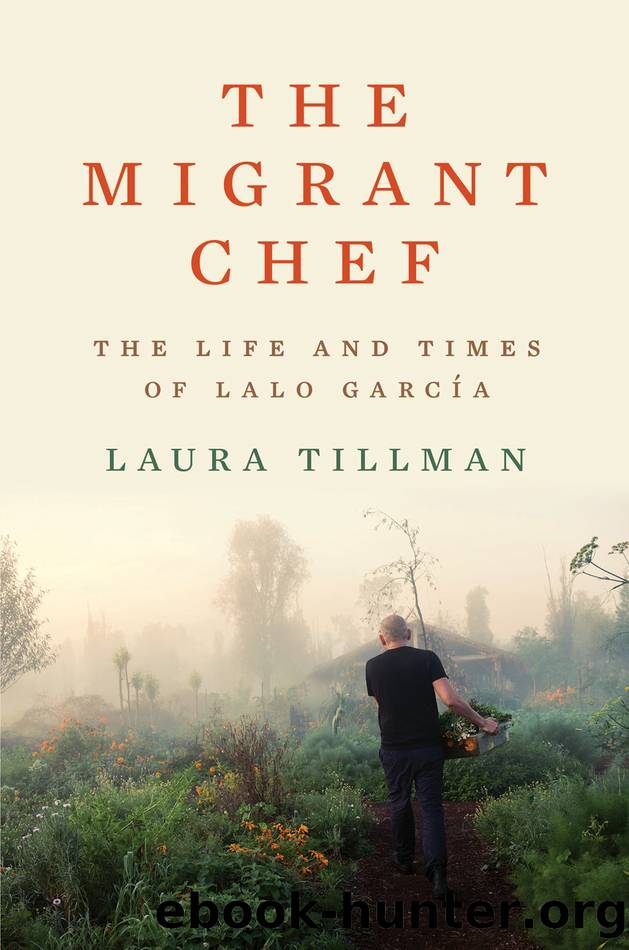The Migrant Chef by Laura Tillman

Author:Laura Tillman
Language: eng
Format: epub
Publisher: W. W. Norton & Company
Published: 2023-04-17T00:00:00+00:00
Lalo came back to Mexico largely unaware of the influences that preceded him. As his profile began to rise, he wasnât sure where his story fit into the larger narrative the media was building about Mexican fine dining, and he didnât know which details to amplify.
As Máximo approached its one-year anniversary, Alonso Ruvalcaba wrote a review in Letras Libres, a monthly literary magazine. He challenged the terms that dominated critical discussion of the restaurantâs food, which, due to its emphasis on local and seasonal products, was often characterized as âsimpleâ and âunpretentious.â Ruvalcaba wanted the public to take a deeper look. Seasonal and local ingredients are to be expected in fine dining today, he wrote, and no, those ingredients donât determine the quality of the foodâthatâs up to the chef who chooses how to prepare them. And while the food at Máximo may have given the impression of simplicity, when one plate is compared to another an artist of great range is revealed. Take, he suggested, the riotously colorful lobster aguachile, and place it alongside the restrained autumnal palate of roasted chicken and chanterelles. âItâs luxurious,â wrote Ruvalcaba. âAnd not just the ingredients that are chosen, but in how they are prepared. Fat, unctuousness, a sensation of fullness on the palate, thatâs luxury. (Itâs not luxury because they flew over the tuna from Tokyo, or because the utensils are made of gold, but really, does anyone still think that thatâs luxury?) In Mexico City today, there are few dishes as luxurious as the fried egg with sweetbreads at Máximo. It almost makes you feel guilty to eat something like that during these difficult times.â
Those early reviews focused on seasonality and simplicity because that was the primary story Lalo toldâand he told it with conviction. To him, the ethic of farm-to-table food was rooted in a lifetime of experiences. It was in Mexico that he first tasted a criollo apple (what in the U.S. would be referred to as heirloom)ââthe little ugly ones,â apples that had defied generations of industrialization intent on mass-producing pretty, hearty varieties capable of traveling long distances unblemished so that they could be displayed in the aisles of a faraway supermarket.
During their years in the fields, Lalo and his family had been handed some of the produce they picked to take home at the end of each day. For the GarcÃas, that could add up to eight pints of berries, four kilos of apples, a flat of cucumbers. Even as a child, Lalo picked up on the differences in quality. Some of the cucumbers were plenty big, but they tasted like water. Others were small, their flesh snappy and sweet. The back of their Ford F-150 âwas always full of buckets of apples, buckets of whatever we would pick.â Sometimes, theyâd meet up with other families and tradeâcucumbers for tomatoes, raspberries for blackberries.
When Lalo began working at Pujol, he paid close attention to where they sourced their ingredients. This was the best restaurant in Mexico, so where
Download
This site does not store any files on its server. We only index and link to content provided by other sites. Please contact the content providers to delete copyright contents if any and email us, we'll remove relevant links or contents immediately.
Down the Drain by Julia Fox(928)
The Light We Carry by Michelle Obama(861)
Cher by Cher(733)
Simple Passion by Annie Ernaux(702)
Love, Pamela by Pamela Anderson(573)
Zen Under Fire by Marianne Elliott(539)
You're That Bitch by Bretman Rock(524)
Novelist as a Vocation by Haruki Murakami(501)
The Foxfire Book of Appalachian Women by Kami Ahrens(500)
Kamala Harris by Chidanand Rajghatta(477)
Alone Together: Sailing Solo to Hawaii and Beyond by Christian Williams(466)
The Nazis Knew My Name by Magda Hellinger & Maya Lee(449)
Gambling Man by Lionel Barber(439)
Drinking Games by Sarah Levy(399)
The Barn by Wright Thompson(390)
A Renaissance of Our Own by Rachel E. Cargle(389)
Memoirs of an Indian Woman by Shudha Mazumdar Geraldine Hancock Forbes(386)
Limitless by Mallory Weggemann(384)
A new method to evaluate the dose-effect relationship of a TCM formula Gegen Qinlian Decoction: âFocusâ mode of integrated biomarkers by unknow(367)
